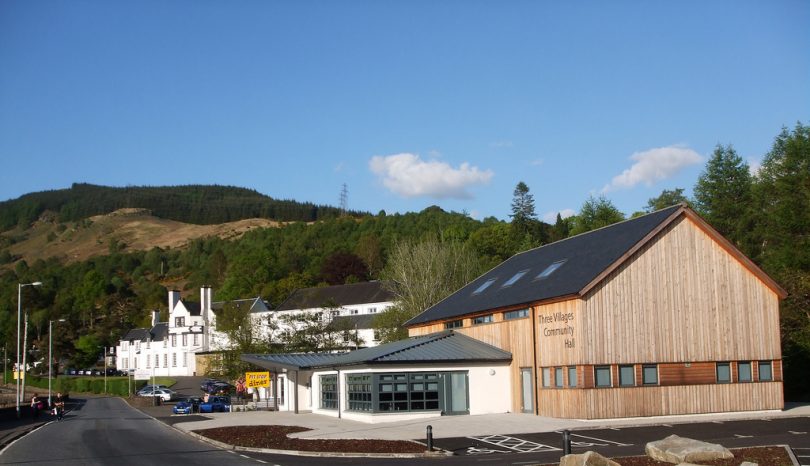Scottish Place-Name Society
Comann Ainmean-Àite na h-Alba
Day conference – Saturday 2 November 2019
Three Villages Community Hall, Arrochar, G83 7AB
CLICK HERE TO DOWNLOAD A PRINTABLE BOOKING FORM
(SEE ABSTRACTS BELOW)
1000–1055 Registration and coffee/tea
1055–1100 Welcome
1100–1150 Sue Furness, Fiona Jackson and Elizabeth Carmichael: Arrochar Place-names and the Hidden Heritage Project
1150–1240 Ronald Black: Place-names in the Dewar Manuscripts
1240–1255 Simon Taylor: Introducing Place-names of the Aird and Strathglass, Inverness-shire, by Simon Taylor with Ronald Maclean and Jake King
1255–1355 Lunch and book launch
1355–1420 Peter Drummond: The Cobbler and his Neighbours: Some Mountain Names around Arrochar
1420–1445 Alison Grant: The Nicolaisen Archive
1445–1515 Alan Cameron: The Place-names in the Poem Flory Loynachan
1515–1545 Bill Stephens: Sneaky Swans: Ealaidh in Place and Tradition
1545–1600 Closing Discussion: tea/ coffee + biscuits after 1600
Please book as early as possible, so that we can get the catering numbers right!
If you would like to attend please complete the form below and send with a cheque for £22 per person (full-time students £12), which includes coffee and buffet lunch, payable to SPNS, to:
SPNS Conference, Peter Drummond, 8 Academy Place, Coatbridge ML5 3AX; by 25th October.
Directions: if driving, take the A82 from Glasgow up Loch Lomondside to Tarbet, then bear left on the A83. On reaching Arrochar turn sharp left onto lochside A815, past the Arrochar Hotel, the Three Villages Hall is a few metres further on, with a sizeable car park. Scotrail train to Arrochar leaves Glasgow Queen St at 0823, arrives 0937. The station is about a mile walk away from village (we may have some shuttle cars). Citylink bus from Glasgow Buchanan St. bus station 0910, arrives 1022. Trains, buses back don’t leave until c.1800: Hall remains open, heated, with tea /coffee until 1730. Lifts to Dumbarton railhead may also be available from 1600.
Acknowledgements of bookings will not be sent. Retain top part for venue location, times, etc.
Abstracts
Ronald Black: Place-names in the Dewar Manuscripts
John Dewar (1802–72) was a Gaelic-speaking tradition-bearer from Arrochar. During 1862–72 he was paid by the duke of Argyll to go around Argyllshire, Arran, W. Dunbartonshire, W. Perthshire and Lochaber in search of oral history, which he wrote up in Gaelic in ten manuscripts now known as the Dewar MSS – 7,000 pages in all. The stories contain numerous place-names (settlements, rocks, caves, fords and other natural features), including many not known from other sources. This paper will focus on two aspects: (1) Dewar’s idiosyncratic recording of place-names in general; (2) Arrochar names.
Alan Cameron: The Place-names in the Poem Flory Loynachan
The poem Flory Loynachan was written about 1830 and relates to the area of South Kintyre where I was born and brought up. It was written by Dougie Macilreavie, a native of Campbeltown, and all the place names mentioned are still in use today. Flory, who was born in 1790, worked at her cousin’s farm, Kilblaan, at the time the song was written.
Sue Furness, Fiona Jackson and Elizabeth Carmichael: Arrochar Place-names and the Hidden Heritage Project
The Hidden Heritage Project was a 2-year project devised and managed by members of the Arrochar and Tarbet community with the aim of getting local people involved in investigating the heritage of the important landscape joining the two villages. This isthmus has been used by Vikings to portage their boats, by MacFarlanes to grow their crops, by drovers to take their cattle to market, by Victorian tourists keen to experience the Scottish Highlands, and is now crossed by a major road, railway, and footpaths. Walkover surveys and archaeological excavations were supported by a series of workshops run by experts in their respective fields. These included a place-name workshop by Dr Simon Taylor, which so inspired a group of attendees that they developed a spin-off research project, culminating in the publication of The Gaelic Place Names of Arrochar Parish.
Peter Drummond: The Cobbler and his Neighbours: Some Mountain Names around Arrochar
This paper will be focused around elucidating some of Pont’s hill names.
Alison Grant: The Nicolaisen Archive
Over the course of several decades, Professor W.F.H. Nicolaisen collected the historical forms of several thousand Scottish place-names, with a view to creating a reliable single-volume scholarly dictionary. Although his plans for a dictionary never came to fruition, he left behind an impressive collection of place-name forms, handwritten on paper slips.
A small project is currently underway to digitise these handwritten slips. A pilot database holds the full data for the county of Banffshire, including both the historical forms and the related etymological notes. For the counties of Moray, Nairn and Inverness-shire, digital slips have been created, listing the historical forms for each name. It is hoped that at least some of this material will be made available on the SPNS website.
Bill Stephens: Sneaky Swans: Ealaidh in Place and Tradition
A standing stone on Lismore is named by the NSA and OS as Clach na h’Eala/ Ealaidh that traditionally marked a sanctuary. The ‘stone of the swan’ neither looks like a bird or is close to any water bodies and several other derivations for the name have been proposed, including ealadh/ tomb and ealamh/ swift. My suggestion is that the correct name could be e ́alaidh/ creeping or sneaking, which those seeking sanctuary might have to. This derivation is discussed for Elie in Place Names of Fife and other examples will be examined including: Abhainn Ealay on North Uist, located in Carmichael’s Gleniallay or Glean-ialaidh, the Glen of Stealth, on North Uist; Seolaid na h-Eala, a narrow almost hidden channel in the Sound of Harris; the traditionally associated Poll na h-Ealaidh on Skye; and Fe ̀ith na h-Ealaidh/ Inbhireala, south of Glen Spean. Mention will also be made of Maorach Ealaidh, shell fish harvested by moonlight!
Photo credit: Brian Kay

